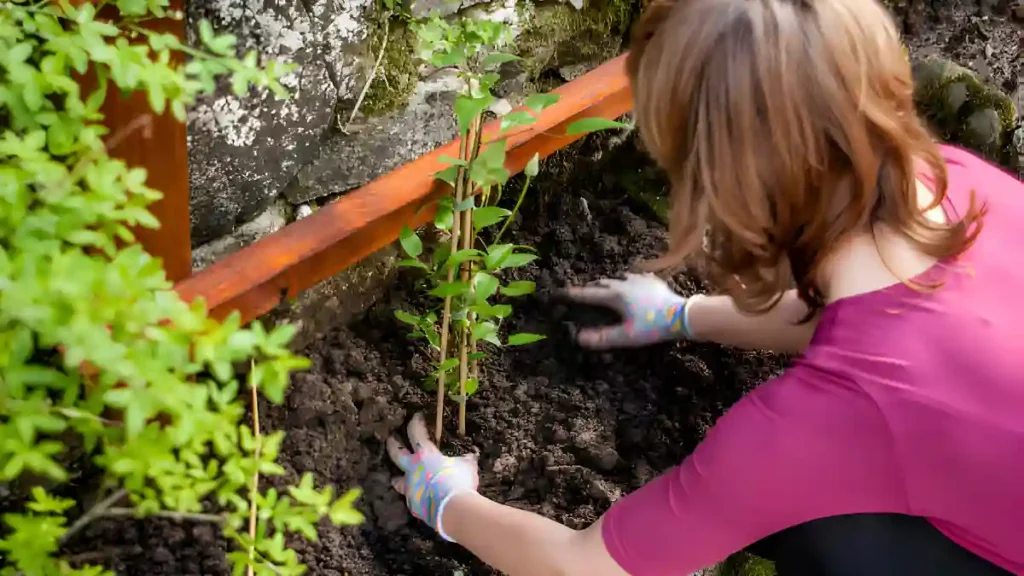Clematis is one of the most well-liked and eye-catching flowering vines for home landscaping. These plants come in both herbaceous and evergreen forms, as well as woody, deciduous vines. With its breathtaking variety of hues and forms, clematis has long captivated gardeners’ affections across the globe. However, cultivating these magnificent blossoms can occasionally be difficult without the proper knowledge and care methods. Prepare yourself for an exciting voyage of exploration as we reveal the techniques for cultivating exquisite clematis blossoms with ease.
This is a manual for growing clematis:
- Clematis comes in a wide range of cultivars, each with specific requirements for growth. While some flower in the spring, others bloom in the summer or fall. Select a variety that is appropriate for your garden’s climate and size.
- Clematis prefers either moderate shade or full sun. They do, however, prefer chilly roots, therefore it may be advantageous to put them close to other plants that shade their roots.
- Clematis vines like their soil to be regularly moist and well-drained. The optimal pH range for soil is 6.5 to 7.0, which is ever so slightly acidic.
- Create a hole that is twice as big and deep as the ball of clematis roots. Make sure the top of the root ball of the plant is level with the soil surface before planting it in the hole. Completely backfill the hole with soil and water.
- Since most clematis kinds climb, they require assistance to develop healthily. Build a fence, trellis, or other support structure next to the plant so the vine has something to cling to as it grows.

This is how to take care of clematis:
- Clematis has to be well-watered when first planted. Maintaining steady moisture levels is crucial for the growth of a strong, resilient root system. After they are established, clematis blossoms need to be watered at least once a week, or 1 inch or 2.5 cm. One way to keep an eye on the moisture levels in flower beds is to keep a rain gauge in your garden. Even while a lot of growers will have plenty of rainfall, other areas may need additional irrigation, especially during prolonged dry spells.
- When new growth starts to show in the early spring, feed clematis with a balanced fertilizer. Steer clear of nitrogen-rich fertilizers, as they may encourage overly dense leaf growth at the expense of flower development.
- Depending on the clematis variety, different pruning requirements apply. Pruning spring-blooming plants should be done after they have finished flowering, while summer- and fall-blooming plants should be pruned in late winter or early spring before new growth starts.
- Mulch the area surrounding the plant’s base to help retain moisture, control weed growth, and maintain a consistent soil temperature.
- Aphids, slugs, and snails are examples of pests to watch out for. Common illnesses to watch out for include powdery mildew and clematis wilt. Use the proper fungicides or insecticides to address any problems as soon as possible.
Conclusion:
The main ideas discussed in the article or guide would be summed up by cultivating and taking care of clematis. It might stress how crucial it is to give clematis plants the necessary care, including choosing the ideal spot, offering sufficient support, giving them the perfect amount of water and fertilizer, and taking care of common pests and illnesses. It might also inspire readers to use the given advice and techniques to grow gorgeous and flourishing blossoms in their gardens. The overall goal of the conclusion is to equip readers with the knowledge and skills necessary to grow these plants successfully.
Certainly! If you’d like to learn more, please consider following our WhatsApp Channel: Harvest Gardening
A frequently asked questions:
Q1: When is the best time to plant clematis?
A1: Early spring or fall, when the ground is chilly but not frozen, are the ideal seasons to grow clematis. This enables the roots to grow before extremely high or cold temperatures. To save the plants from being stressed, avoid planting in the sweltering summer months.
Q2: Can I grow clematis vines in containers?
A2: These vines may be grown in containers, yes, but make sure the container is big enough and has drainage holes.
Q3: What are the different types of clematis flowers?
A3: These blooms can be divided into three primary categories: late-flowering, large-flowered hybrids, and early-flowering types. Each bunch has unique qualities related to size, color, and bloom duration.



